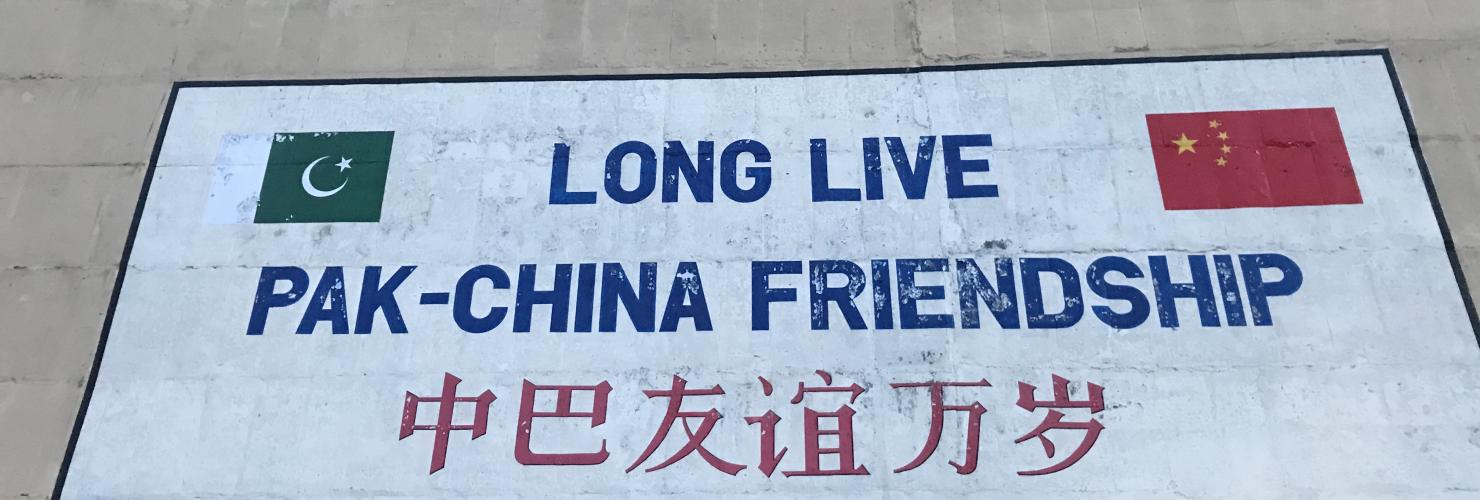

The BRI in Pakistan: Too big to fail
Even under a more critical government in Islamabad, the China-Pakistan Economic Corridor is unlikely to be derailed. The stakes for both sides are too high. Pakistan needs Chinese funding for its economic revival, and a healthy Pakistani economy is in China’s regional security interest.
The Belt and Road project involving the largest amount of Chinese funding to date, the China-Pakistan Economic Corridor (CPEC), is coming under close scrutiny following the inauguration of Imran Khan’s government in August 2018. Khan’s party, Tehreek-e-Insaf (PTI), has raised questions about suspected CPEC-related irregularities, as well as overly generous conditions for Chinese companies. Beijing has now allowed Islamabad to invite investors from third countries to participate in CPEC, and to expand project categories in line with Khan’s social policy agenda. Projects in healthcare, education and vocational training can now be part of CPEC.
Khan’s election comes at a time when Pakistan is facing another balance-of-payments crisis. If he has to turn to the IMF for a bailout, this would threaten to derail China’s plans, as the IMF would likely require Islamabad to limit further sovereign guarantees connected to large infrastructure projects.
Three years after the official launch of CPEC in 2015, data from the MERICS Belt and Road Tracker suggests, however, that Beijing and Islamabad are both too deeply invested in the infrastructure building efforts to let implementation grind to a halt. What is more, the implementation of CPEC had not been disrupted by a previous IMF package that ran until 2016.
Energy first – transportation and industry later
Rhetoric surrounding CPEC emphasizes overland connectivity, but it is inaccurate to think of the current incarnation of CPEC as a transport corridor running from China’s Xinjiang province to the Pakistani coast. The drive from Kashgar to Gwadar won’t be an easy one for some time yet, and the data suggests a different financial focus on energy, specifically on coal.
Power plants constitute the bulk of already completed CPEC projects. Large coal-fired plants at Sahiwal and Port Qasim, which carry price tags of 1.6 billion USD and 1.98 billion USD, are the most significant. If one includes projects implemented and/or financed by Beijing that have (for many reasons) not been branded as part of CPEC, energy makes up an even larger share, with power plants accounting for over 90 percent of the cumulative total cost of 13.1 billion USD.
The Port Qasim and Sahiwal power plants are both regarded as “early harvest” projects by CPEC’s planners - they are scheduled for completion before 2020, during “Phase I” of CPEC’s projected lifespan. According to CPEC’s official “Long Term Plan,” the goal of the first phase is to address the “major bottlenecks to Pakistan’s economic and social development,” while the next two phases up to 2030 are supposed to trigger an “endogenous mechanism for sustainable economic growth.” In other words, Phase I will address Pakistan’s crippling electricity shortages, building a base for later industrial growth and connectivity with China. The latter stage of industrial development is reflected in ambitious, but to date mostly vague plans for joint industrial parks and special economic zones across Pakistan.
Non-energy related projects considered in the “Phase I” category are mostly infrastructure projects that have been long in the making. These are considered low hanging fruit, and finishing them could constitute something of an economic stimulus. The schedule for Chinese investment and construction activities in Pakistan indicates a long-term strategy for Pakistan’s integration into China-centered value chains. Pakistan’s stabilization and gradual development is key to this strategy: first come energy supply and economic survival, followed by industrialization, self-sustained growth and enhanced connectivity with Xinjiang.
Islamabad’s interest in the success of such plans is obvious: it wants to break through economic stagnation and navigate the current balance-of-payment crisis while avoiding the budgetary strictures coming with another IMF package. Potential longer-term problems, budgetary and beyond, will be another government’s headache.
Economic development could be a counterweight to terrorism
The economic health of its “all-weather partner” is also a serious strategic concern for Beijing. In its fight against the so-called “three evils” of “terrorism, separatism, and religious extremism,” Beijing knows that it needs a secure and stable neighbor at the border of its troubled western autonomous region of Xinjiang. For Beijing, Pakistan is also a useful thorn in the side of India, China’s strategic rival in the region. More than this, Pakistan remains China’s only ally.
After 46 years of strategic partnership, there is little reason to doubt either side’s commitment to CPEC, and with projects like Sahiwal already completed ahead of schedule, implementation indeed proceeds apace. However, as elsewhere along the Belt and Road, Beijing’s short-term economic gain is also firmly on the agenda, and Chinese state-owned enterprises like Huaneng Shandong Power are reaping huge benefits from projects in Pakistan, Sahiwal included.
CPEC has not proceeded without setbacks. Several prominent energy projects have been dropped or delayed, with the 2017 cancellation of five prominent energy projects (mostly coal plants) being the most damaging blow so far. The reasons behind the projects’ cancellation are not entirely clear, but the upshot is that they were deemed “unfeasible” due to logistical obstacles and/or an inability to agree on commercial terms. But we have observed no overall reduction in the rate at which projects have been agreed, constructed, and completed over the past three years.
Security and geopolitical concerns, such as the insurgency in Balochistan, Islamist terror attacks, and India’s objection to CPEC for running through disputed territory in Kashmir, are the most frequently cited obstacles. While serious, none of these problems are new or necessarily growing.
Chinese business interests undermine BRI goals
Pakistan’s financial situation is however worsening. Although the details of loan agreements between China and Pakistan are kept secret, Beijing’s loans are for the most part concessional. The repayment of Chinese state-owned enterprises (SOEs) is a bigger concern. About two thirds of Belt and Road financing in Pakistan comes from Chinese companies in the form of direct investment (albeit investment directly facilitated by loans from Chinese policy banks).
The terms extracted by these big Chinese SOEs are anything but concessional development finance. Both Qasim and Sahiwal power projects were built and are operated by consortia involving Chinese SOEs, and both charge high tariffs for electricity. While no one can blame these companies for securing the best deals possible, expensive electricity undermines the overall goal of CPEC’s “Phase I”: to establish a solid base for future industrial growth. With electricity prices twice as high as the ones in Bangladesh, Pakistani textile factories will not be competitive. This part of the BRI, aggressively helping Chinese companies expand and build profit bases abroad, regularly undermines Beijing’s other strategic goals.
Even if Khan’s party takes a tougher stance than the previous government on CPEC projects, it might not spell the end of BRI progress in Pakistan. Should Khan’s push for transparency materialize, perhaps pushed by the IMF, it might help Pakistan to negotiate more transparent terms with its giant neighbor. Pakistan may be the needier party, but Beijing also cannot afford to abandon an initiative that was pitched as securing the economic health of its ally.
CPEC is a “flagship project” of the entire Belt and Road Initiative, and more than 15 billion USD of Chinese FDI and loans are already tied up in relevant projects (not counting those in the planning phase). Greater transparency could help to fulfill the most necessary condition for CPEC’s success: Pakistan’s economic revival. Pakistan’s successful transformation into an industrial base would ultimately be in China’s own interest, because it would reflect positively on the overall BRI.
Click here, to access our map on the BRI in Pakistan or learn more about the MERICS BRI tracker and database here.

